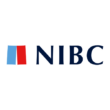AI, BNPL and CBDCs: The industry’s fintech predictions for 2024
As technology advances and consumer preferences keep changing, the fintech industry continues its evolution as it strives to keep pace. With insights from companies such as Capgemini, Marqeta, Zafin, Fujitsu Financial Services and more, FinTech Futures takes a look at some of the predictions being made by industry experts for 2024 and beyond.
AI hype to continue
2023 was a defining year for artificial intelligence, in particular generative AI (GenAI), which experienced a huge surge in popularity following the launch of ChatGPT in late 2022.

Most experts believe AI has a pivotal role to play in 2024 and beyond
As we move into 2024, Capgemini predicts AI will become “deeply rooted” across the payments value chain, anticipating advancements in fraud management, real-time transactions, customer experience and regulatory compliance.
Supporting this view, Hannah Fitzsimons, CEO of Cashflows, a UK-based paytech for SMEs, says: “AI and ML hold the promise of revolutionising fraud detection systems, improving the accuracy of risk assessments, streamlining financial planning and changing the game on customer service.
“Already addressing the demand from consumers for a seamless payment experience, I expect to see companies rapidly adopting the AI and ML technology that will enable the biggest benefits, with the least risk.”
From the consumer side, a survey from US-based card issuer and payments processor Marqeta reveals that over a third of respondents were interested in using GenAI to help manage their finances, rising to more than 50% for respondents under the age of 50.
“I predict consumers will soon be able to use GenAI to get personalised, real-time updates on their finances, which will improve their financial literacy and wellbeing,” says Nick Holt, head of solutions and delivery, Europe at Marqeta.
Holt also predicts the emergence of new credit options such as “predictive credit cards” where AI can anticipate consumers’ spending needs based on historical behaviour and adjust their credit limits or offer tailored rewards accordingly.
Krista Griggs, head of banking, financial services and insurance at Fujitsu, describes generative AI as a “transformative solution”.
“By automating routine tasks, financial institutions can redirect saved resources toward more strategic initiatives. The pressure to optimise operations has never been greater, and GenAI is the answer.”
Embedded finance
Holt also believes consumers are becoming “increasingly comfortable” and accepting of financial services provided by brands rather than traditional providers.
“This trend is likely to accelerate over the coming months, with a growing number of brands offering embedded credit card services directly to customers and utilising personalised transaction and usage data to enhance experiences,” he says.
“As a result, I think potentially the biggest topic in payments over the coming months will be, the humble credit card becoming the new homepage for the brand experience.”
Supporting this claim, Mark Vermeersch, chief platform officer at Treasury Prime, believes embedded card programs and deposit offerings will make a comeback in 2024.
“There has been a shift to profitability from growth over the past 12-24 months, but it seems as though there may be a shift in sentiment from an era of high inflation and rising interest rates to a market environment that is more stable,” Vermeersch says.
“If that holds true, I expect vertical marketplaces and Software-as-a-Service (SaaS) companies to raise capital at reasonable valuations to invest in the creation of new product lines, like embedded deposit offerings.”
BNPL back on track
As consumers battle rising costs of living, Holt predicts a surge in buy now, pay later (BNPL) services due to its convenience and flexibility. Citing recent Marqeta research, he claims that 38% of UK respondents have used BNPL services to make ends meet during the last year, increasing to 61% amongst 26-34 year olds.
In a similar vein, Capgemini anticipates BNPL services to become “faster and more convenient” in 2024, adding that it is “on track to become the favoured payment instrument, especially among younger generations”.
The rising potential of CBDCs
With a record number of countries now at various stages of development with Central Bank Digital Currencies (CBDCs), Capgemini foresees they will play a significant role in the coming year, especially when it comes to complementing cash and bolstering payments system resilience, claiming that their widespread use may help eliminate financial exclusion.
Particularly in Asia, Alex Axelrod, founder and CEO of international payments platform Uluky, says: “The usage of CBDCs beyond their domestic markets is still an under-researched field with plenty of difficulties to be solved. However, it certainly appears that CBDCs are becoming the ‘hidden dragon’ in Asia, with the potential of this technology growing more and more.”
The power of partnerships
Branavan Selvasingham, VP of AI and automation at financial software provider Zafin, believes partnerships between banks and fintechs will be key in 2024.
“Collaborating with specialsed fintech solution providers allows institutions to integrate innovations rapidly without overwhelming internal resources,” he says.
Similarly, Vermeersch from Treasury Prime believes there is much to gain from bank-fintech partnerships, including capturing market share.
“Fintech and bank partnerships are the future,” he says. “Banks are looking to evolve their relationship with their customers, and fintechs are at the cutting edge of building innovative products and services. The right bank and fintech partnerships can help banks better retain their existing customers or gain market share.
“Given the volatility around deposits in the past 12 months, creating a tighter relationship with customers through fintech partnerships will help banks retain their deposits, so I expect increased investment in bank-fintech partnerships.”
In conclusion
From the predicted surge in digital financial services to the pivotal role that AI is poised to play, it appears that 2024 will make for another exciting year in fintech, with companies already gearing up to navigate an evolving landscape filled with uncertainties in a push towards a more secure, convenient, inclusive and innovative future.










































